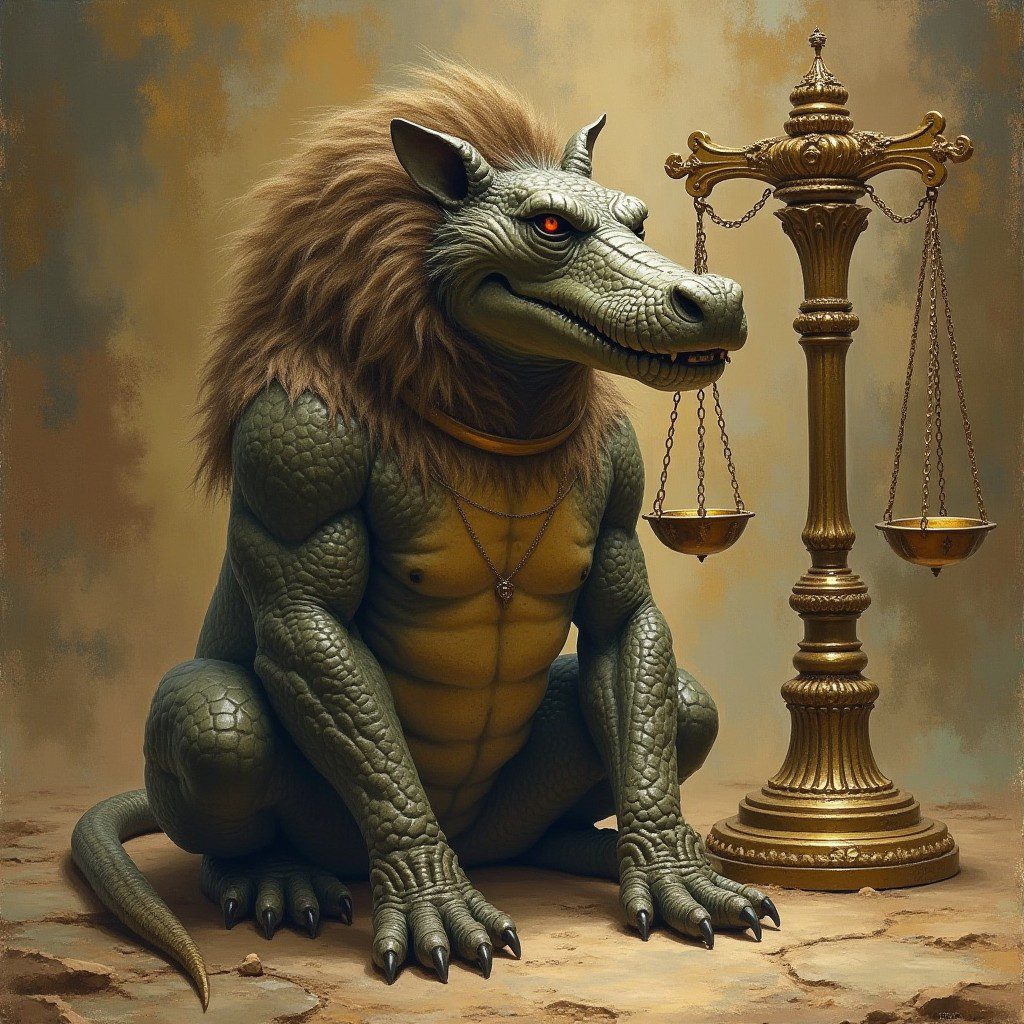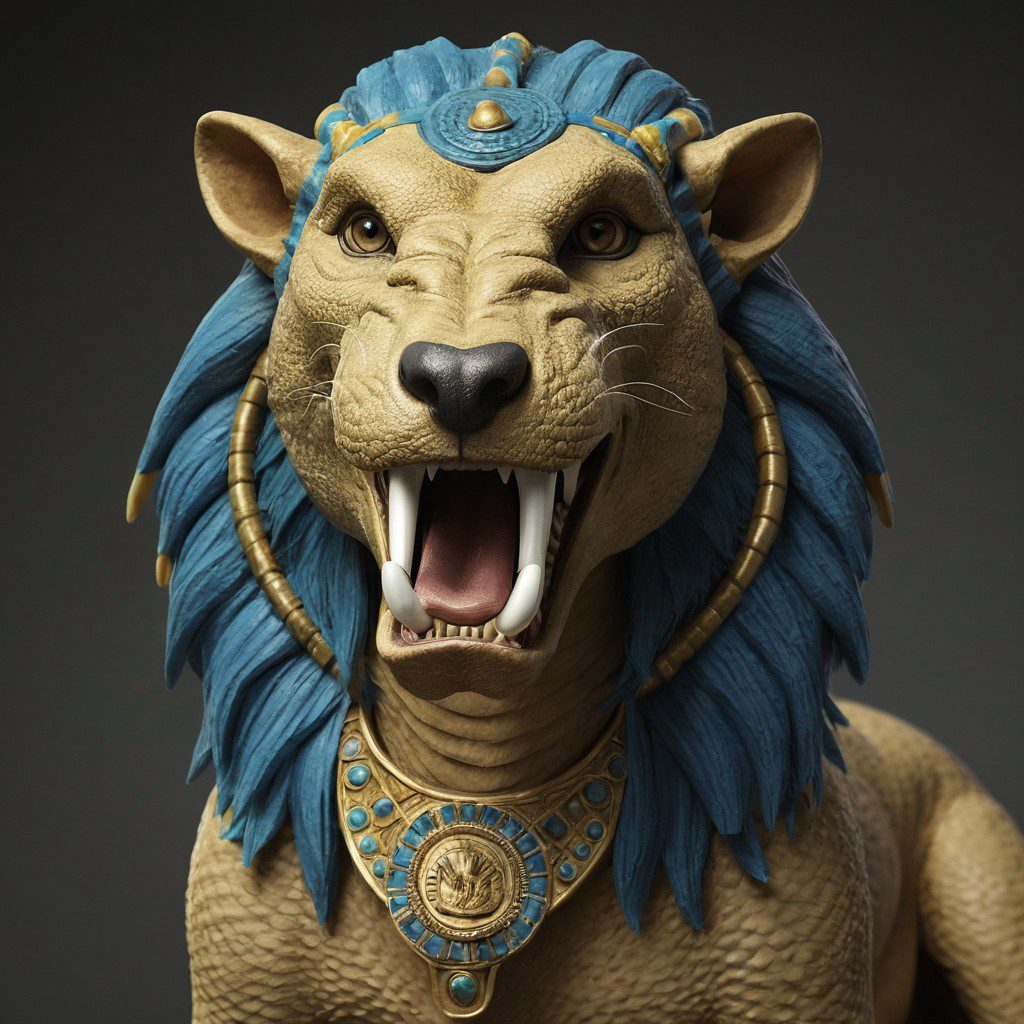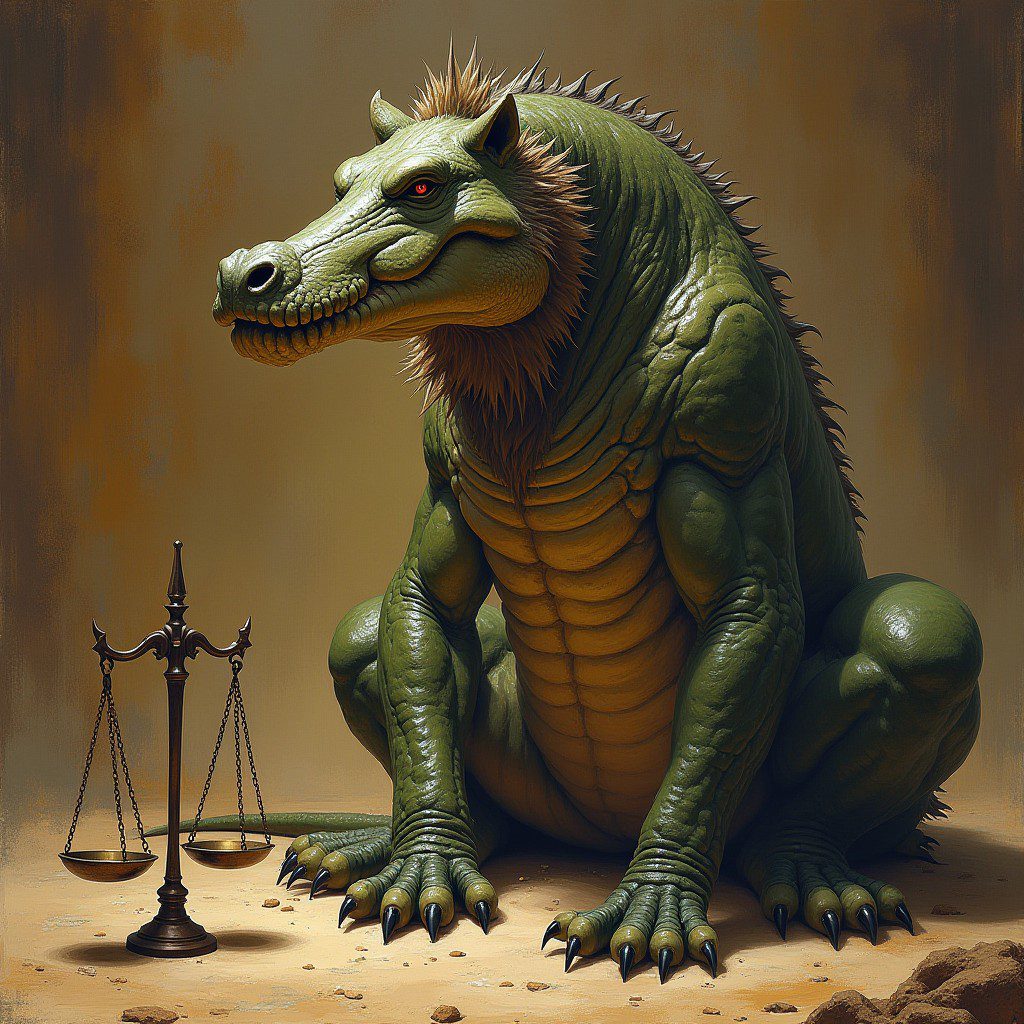Ammit: The Devourer of Souls in Ancient Egyptian Mythology

In the realm of ancient Egyptian mythology, where gods and goddesses governed every aspect of life and death, Ammit stood as a fearsome figure. Known as the Devourer of Souls, Ammit was not a goddess in the traditional sense but a demoness associated with the judgment of the dead. She played a crucial role in the afterlife, particularly in the Weighing of the Heart ceremony, where the fate of the deceased was decided. With the head of a crocodile, the body of a lion, and the hindquarters of a hippopotamus, Ammit embodied the most dangerous animals known to the Egyptians, representing her terrifying ability to devour those unworthy of eternal life.
The Role of Ammit in the Afterlife
Ammit’s primary role in Egyptian mythology was tied to the judgment of souls in the Duat, the Egyptian underworld. When a person died, their soul was guided by Anubis, the god of mummification and the afterlife, to the Hall of Ma’at, where their heart was weighed against the Feather of Ma’at—the goddess of truth, justice, and cosmic order. This ritual determined whether the deceased had lived a virtuous life.
If the heart was lighter than the feather, it meant that the person had lived a just life, and they were granted passage to the eternal paradise known as the Field of Reeds. However, if the heart was heavier than the feather, weighed down by sin, it was cast aside and fed to Ammit, who sat hungrily by the scales, waiting to devour the unworthy souls. In this way, Ammit functioned as the executioner of the dead, ensuring that those who failed the test would face eternal destruction rather than rebirth or immortality.
Unlike other deities, Ammit was not worshiped by the Egyptians but feared. To be consumed by Ammit was to be denied an afterlife, condemned to spiritual oblivion. This fate was worse than death itself, as it meant that the soul would be destroyed completely, wiped from existence with no hope of rebirth.
Ammit’s Appearance: The Beast of Judgment

Ammit’s fearsome appearance was a combination of the three most terrifying animals known to ancient Egyptians:
- The head of a crocodile, symbolizing ferocity and danger.
- The body or torso of a lion, representing strength and power.
- The hindquarters of a hippopotamus, an animal that was one of the most feared creatures in the Nile due to its aggression.
These three animals were not only dangerous in the natural world but also held symbolic significance. Crocodiles, lions, and hippos were all animals that ancient Egyptians respected and feared due to their power, aggression, and unpredictability. By combining these traits into one entity, Ammit became a symbol of ultimate destruction and judgment.
The fact that Ammit was often depicted crouching beside the scales of Ma’at in the Hall of Judgment further emphasized her role as the guardian of moral order. While the gods and goddesses, such as Anubis and Ma’at, ensured that justice was carried out fairly, Ammit was the force of retribution—waiting to punish those who failed the test of righteousness.
The Weighing of the Heart and Ammit’s Role in Egyptian Belief
The ancient Egyptians believed that when a person died, their soul underwent a journey through the Duat (the underworld), where it faced various trials before reaching the Hall of Ma’at. The final and most critical test was the Weighing of the Heart, which was overseen by Osiris, the god of the dead and ruler of the afterlife, alongside Ma’at and Anubis.
In this ceremony, the heart of the deceased was placed on one side of a scale, and the Feather of Ma’at on the other. The heart was considered the seat of a person’s emotions, memory, and morality, and it held the truth of the individual’s actions in life. If the heart was found to be pure and free of wrongdoing, the deceased was allowed to enter the afterlife, where they could enjoy eternal peace.
However, if the heart was heavy with sin and dishonesty, Ammit would step in. The unworthy soul would be denied the chance of eternal life and, instead, face a terrifying fate—to be devoured by Ammit. This act was known as the “Second Death”, which marked the complete annihilation of the soul, a final death with no possibility of rebirth or reincarnation.
This concept of judgment and Ammit’s role in it was central to Egyptian beliefs about the afterlife. It was a moral system that ensured that only those who lived according to Ma’at’s principles—truth, justice, and balance—could achieve immortality, while those who lived dishonestly faced destruction.
Symbolism of Ammit: Fear and Justice

Ammit’s fearsome nature and her role as the Devourer of Souls symbolized the consequences of immorality and a life lived in defiance of Ma’at’s principles. In Egyptian mythology, Ammit embodied the ultimate punishment for those who were corrupt or sinful. Her existence was a warning to the living that failing to uphold moral order would result in complete spiritual annihilation.
Despite her terrifying role, Ammit was not seen as evil in the way that some cultures depict demons. Instead, she was a necessary force in the Egyptian afterlife, ensuring that cosmic justice was upheld. In this way, Ammit was a manifestation of Ma’at’s principle of balance—she punished those who disrupted the natural order and rewarded those who followed the path of righteousness by sparing them from her wrath.
Ammit in Popular Culture and Modern Interpretations
While Ammit is not as well-known as other Egyptian gods and goddesses like Osiris, Anubis, or Ra, she has appeared in various forms in modern pop culture, particularly in works that explore themes of judgment and the afterlife.
Ammit has been featured in comic books, video games, and TV shows, often as a symbol of judgment or as a creature of destruction. For example, in Marvel Comics, Ammit (sometimes spelled “Ammut”) is depicted as a minor antagonist associated with the Egyptian pantheon, representing the devourer of the unjust. In the video game Assassin’s Creed Origins, Ammit appears as part of the game’s representation of the Egyptian afterlife, reinforcing her role as a feared figure in judgment.
Ammit has also been featured in popular TV shows such as Stargate SG-1, where she is portrayed as a monstrous, serpent-like creature that embodies chaos and destruction, reflecting her ancient role as a devourer of the damned.
In modern spiritual and metaphysical circles, Ammit is sometimes invoked as a symbol of cosmic justice, representing the idea that negative or destructive actions have consequences, whether in life or beyond.
Strengths and Weaknesses of Ammit
Strengths:
- Devourer of Souls: Ammit’s most fearsome strength lies in her ability to consume the hearts of those deemed unworthy, destroying their soul completely. This ultimate punishment is one of spiritual annihilation.
- Symbol of Judgment: Ammit represents the final arbiter of moral justice, ensuring that only those who live according to truth and righteousness are allowed passage into the afterlife.
- Power of Fear: Ammit’s fearsome appearance and role in the afterlife act as a deterrent against immorality, encouraging Egyptians to live virtuous lives in accordance with Ma’at.
Weaknesses:
- Restricted Role: Ammit’s power is limited to the judgment of the dead. Unlike gods such as Osiris or Anubis, she does not actively intervene in the lives of the living or hold sway over other aspects of creation or death.
- Dependent on Judgment: Ammit’s role is secondary to the gods who oversee the Weighing of the Heart. Her power only comes into play if the soul is deemed unworthy, meaning she is dependent on the outcome of Ma’at’s scales.
- Feared but Not Worshipped: Unlike most gods and goddesses in ancient Egypt, Ammit was never worshipped. She was feared, and Egyptians sought to avoid her by living according to Ma’at’s principles, reducing her influence.
Ammit: The Guardian of the Afterlife’s Moral Order
Though Ammit’s role in Egyptian mythology was limited to the afterlife, her importance as the Devourer of Souls cannot be overstated. She served as a powerful symbol of moral judgment, embodying the consequences of a life lived outside the principles of truth and justice. In her terrifying form, Ammit guarded the threshold between eternal life and eternal destruction, ensuring that only the pure of heart could pass into the afterlife.
Ammit remains a fascinating figure in Egyptian mythology, representing the balance between justice and retribution, and reminding us of the ancient belief that one’s actions in life determine one’s fate in death.
